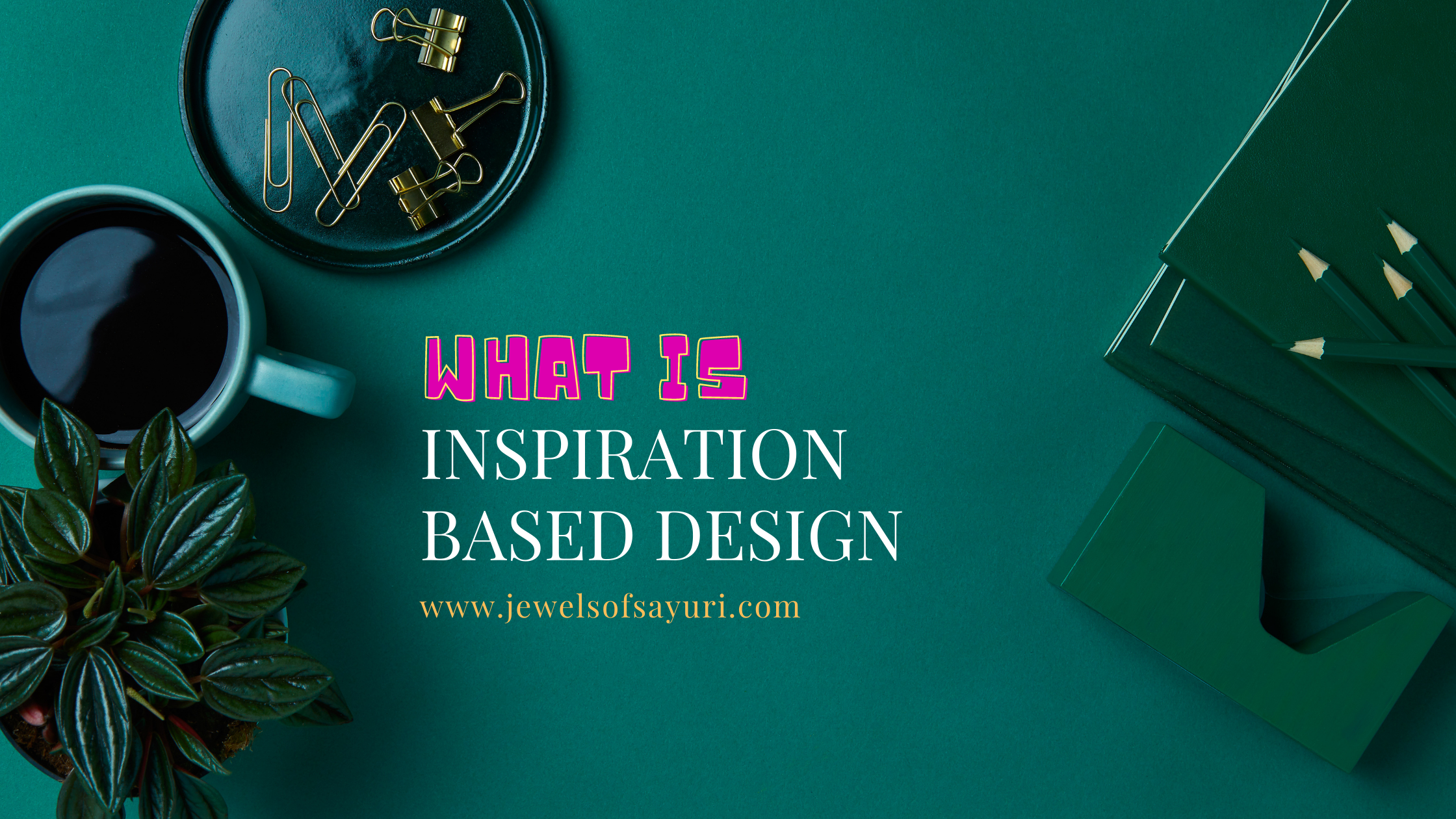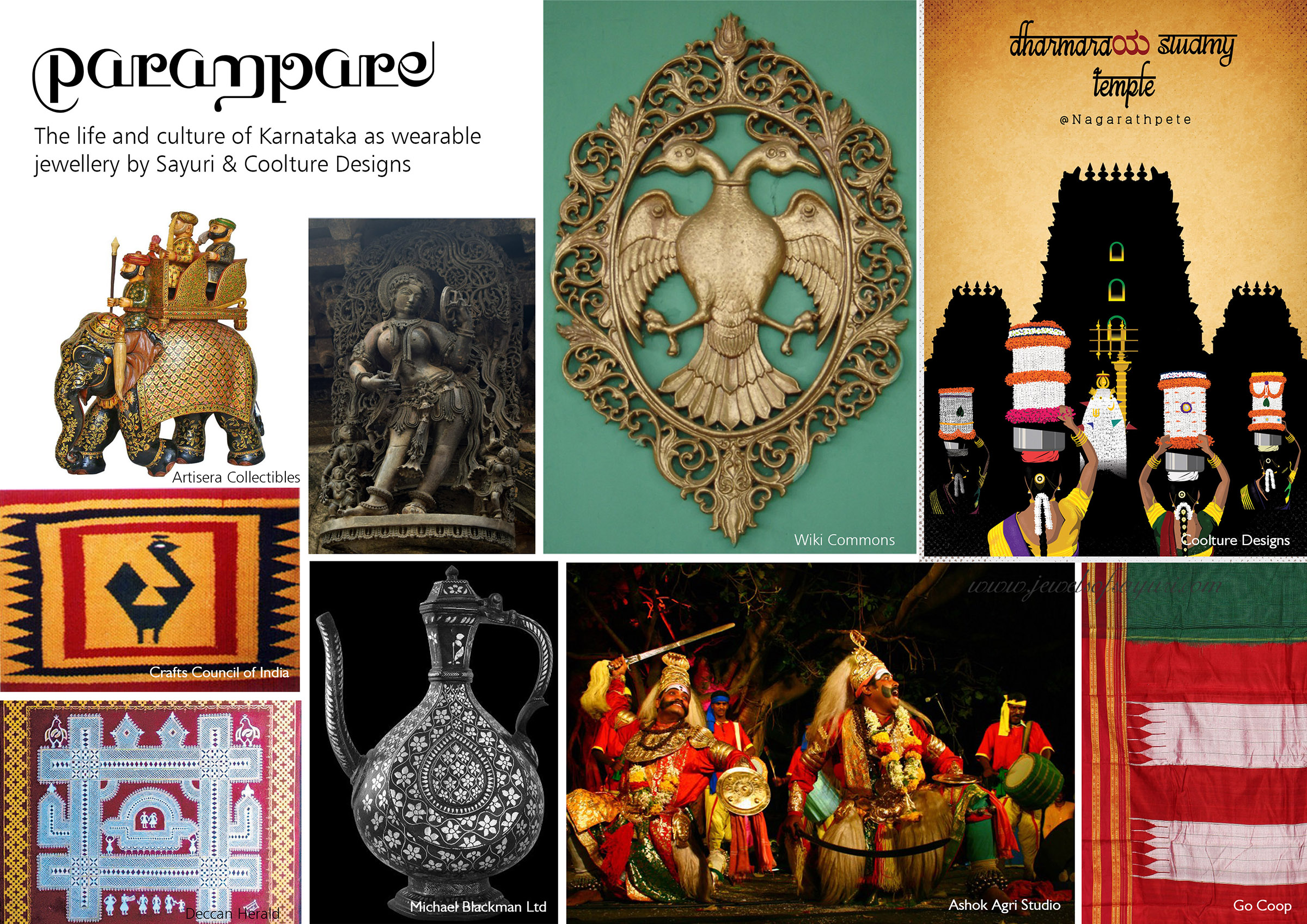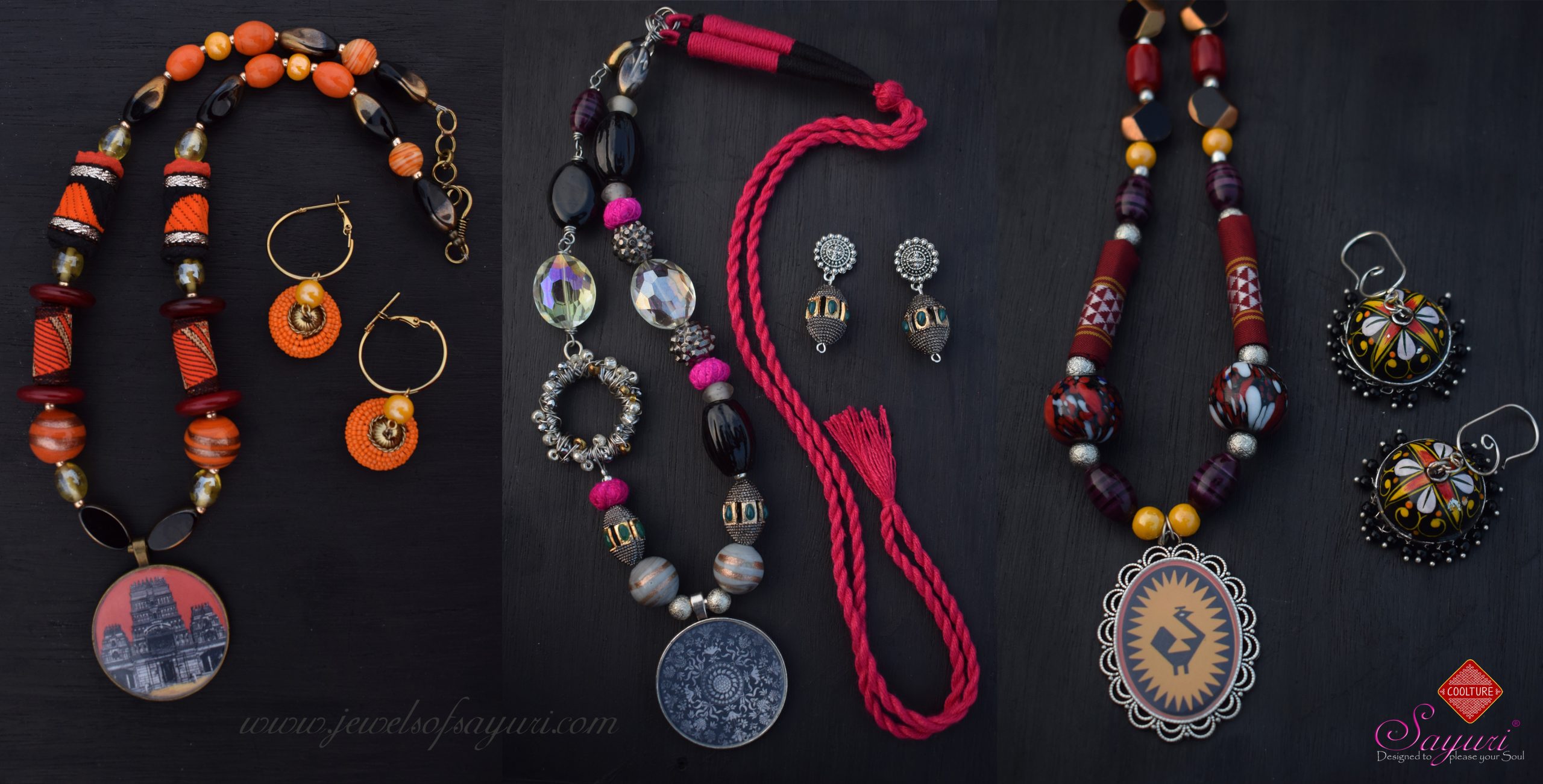Next in the Design process methodology series, I bring you Inspiration based design process. My past posts on ABS Challenges and AJE challenges are great examples of Inspiration based jewellery design. Almost, all my seasonal thematic collections are inspiration based. Patinam is based on the city of Chennai; Parampare on the Culture, crafts and people of Karnataka. Inspiration based design process can be followed even when you work for a client and custom design jewellery. Let me elaborate with the example of Parampare.
Parampare was a collection of thematic picture jewellery for Coolture Designs. It was sold exclusively by them with design credit to me. Their client brief was for me to create a collection inspired by the culture and heritage of Karnataka. The process was iterative as every client brief based project would be but the jewellery and their stories were entirely based on their individual inspirations.

Direct and In-direct inspiration
Before we move to the actual process of Inspiration based design, I want to clarify that the inspiration to realisation process can happen in several ways. for instance, your inspiration can be direct or indirect. In my Wilson’s bird of paradise necklace, I used the concept of multi colours and soft fibrous materials in my piece. I did not use the image of the bird or its exact colours. This is indirect inspiration.
Process of Inspiration based design
Taking Inspiration means that get to know an object, material, form, concept, or mood that sets your thought wheels running. It must drive you to create following the principles, aesthetics, concepts or even the rules of whatever was your inspiration in the first place. Taking one art form or visual media and translating it into another as is is not taking inspiration. It is Translation – like what I do with my Kolam jewellery. This is allowed as long as the original visual and/or concept is in the free domain.

Pre-conceptualisation stage
- Select a concept, a mood, a theme or inspiration to develop an idea. This idea can be a concept – sensory stimulation and reception, a mood – dark romance or a theme such as Urgent Adornment. A material, a shape, a form or a particular colour can inspire you. My collection Riti was based on the concept of Sensory stimuli and perception. It had pieces informed by taste, sight, smell and so forth.
- Research on the chosen inspiration. Elaborate the chosen theme, mood, inspiration as words and as visuals. If you work with a team then you can brainstorm and write down or map your ideas. Use these three question words to help you begin – How, How much and from where.
- Create boards to collate that idea. We call this combination of words and visuals (when put together) generally as moodboards. However, if you speak to a designer or design student they will refer to each board as mood board, theme board, concept board, colour board, materials board, patterns board, etc based on what each corresponds to. All of them have different functions and scope. You really don’t need a sophisticated software to do this. Use Pinterest to collect images. You can use your Microsoft Powerpoint or even an online tool like canva to make your boards. if you have never used Canva before, read this post to get started. Credit all artwork that is not yours to their makers.

Karaga necklace and earrings, Bidri necklace and Navulgund peacock necklace
Conceptualisation stage
- Use these boards to interpret and analyse your idea. The interpretation can be direct or indirect. Identify the colours, materials, shapes and forms, finishes, techniques and technologies, if any that you want to use in your design. Create colour and material palette. This step will help you convert intangible emotions into tangible representations.
- Ideation and prototyping – While these are two separate steps, I personally ideate my jewellery designs by exploring with the actual materials as I work on costume jewellery. Alternatively, you can sketch and then prototype. When working with a more expensive material or an experimental technique we create a preliminary model of a product, often with a cheaper/more flexible/look alike material. This is called prototyping. Jewellers prototype gold jewellery using copper.
- Create you proposed design – Here you make the actual product. This step in precious jewellery comes after prototype testing and feedback. The same is true when you are experimenting with a new technology as I did with 3D printing pen here.
Post conceptualisation stage
Test and Feedback are two important stages in any Design process. You might have to modify, alter or rethink the design if it is not working out for you. Jewellery that is too heavy, doesn’t fall or drape well, that is not colour balanced or is not harmonious just will not do. You will make them again with modification, sometime again and again until it is just right. Creating OOAK jewellery can be very expensive and time consuming as you have to go through several rounds of iteration to get one piece right. However, you never make the same piece again.
This is my last post in the Design methodology series for now and I hope that it has been useful. I may write about memory based design in the future. If you would like me to elaborate on any aspect of inspiration based design please do tell me.


Leave a Reply